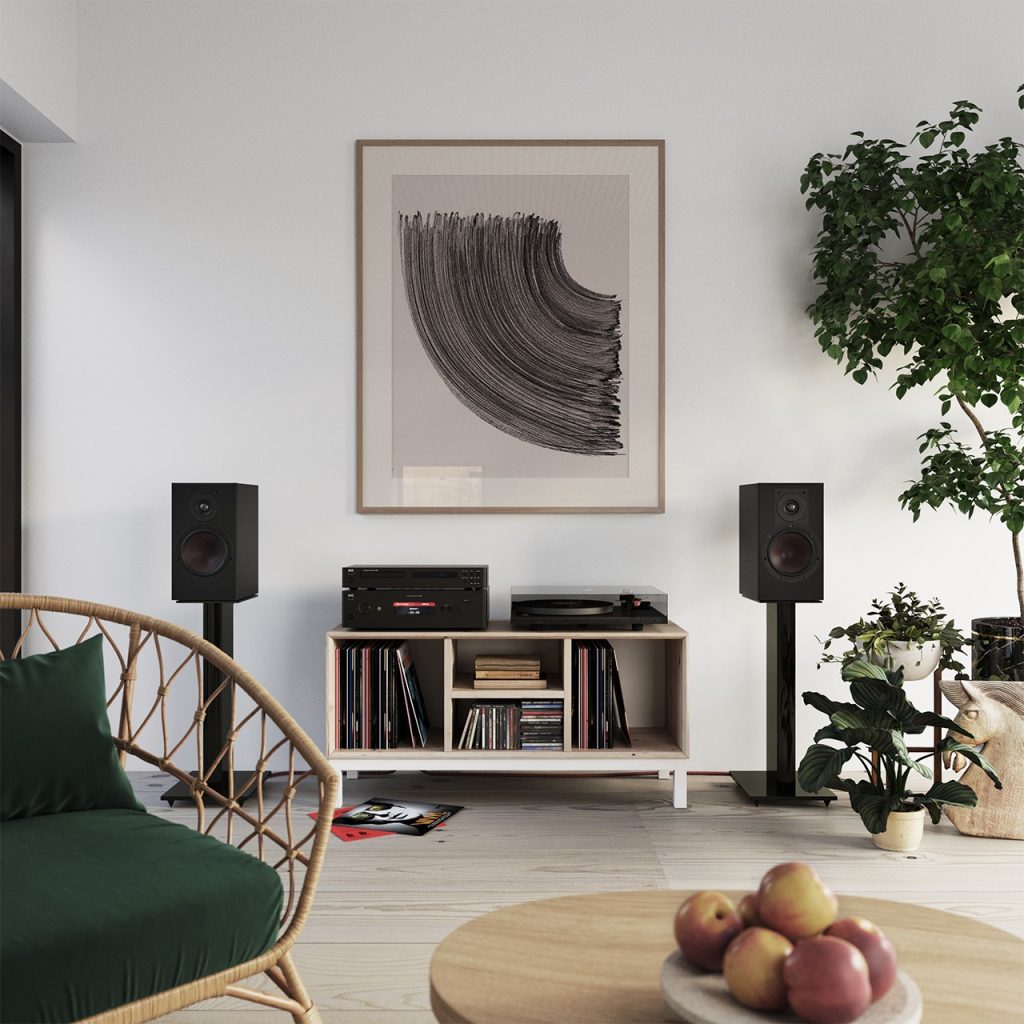The limits within Room mode cancellation through subwoofer arrangements works best is listed below:
- The room has rectangular shape
- No openings to adjacent rooms
- Room boundaries with similar surface characteristics
- Flat walls
- Listening location is inside the area where optimum room mode cancellation can be achieved

Figure 1. represents an example for the first recommendation:
(A)
Shows a single subwoofer exciting a standing wave (first-order width mode) between two parallel walls. The sound pressure at the wall surface always shows its maximum while air particle velocity will be zero which can be explained by the solid wall that sound has to face. Air particles are forced to stop at the room boundary while pressure will be built-up. Sound pressure maxima of first-order modes face each other with inverse polarity.
(B)
Illustrates two methods of minimizing the first order room mode:
- A single subwoofer placed in a pressure minimum attenuates the first-order mode by failing to excite it.
- One subwoofer on each side by driving the mode destructively, leading to a cancellation of this standing wave.
(C)
Depicts that the methods shown in (b) are failing to attenuate the second order room mode because of driving the pressure maxima of the second order mode with same polarity.
(D)
Is an example for a subwoofer arrangement in order to attenuate the first three room mode orders. By placing two loudspeakers into the sound pressure minima of second order room mode also incorporates a depression of the first- and third-order room mode since both subwoofers are still located in the pressure maxima of the two latter ones.
Seat-to-seat variations
In literature, the term “seat-to-seat variations” is often mentioned related to delivering the same sound to every seat in the audience. In home theaters, this can be of interest if the “sweet spot” with optimum sound should cover more than one seat. In this case also active sound absorption like equalization in the signal path or signal processing based on measurements made at more than one seat is limited in addressing this demand and will always be a compromise.

However, using arrangements of multiple subwoofers will reduce such seat-to-seat variations and combined with signal processing applied in the signal path will result in a similar sound delivered to listener in the sweet spot. Recommended multiple subwoofer arrangements by Welti are depicted in Figure 2.
subwoofer placement
A practical example is given in Figure 3. (Data are taken from Welti). Not much explanation is needed to see that compared to the subwoofer placement in the left room corner, which causes to excite all of the horizontal-plane modes, the arrangement in (d) has eliminated most of the room modes including higher order and tangential room modes up to 80 Hz.

Seat-to-seat variations given as the Mean spatial Variance are reduced and a similar sound is perceived at each listening location. Since the remaining room mode at 63 Hz is a height mode, there is no seat-to-seat variation in the audience area. In case of a coincidence between the ear height of the listeners and the remained room mode, one can easily face this problem by adjusting the seating height or by applying either passive absorbers (ceiling/floor) or active absorbers on both sides.
In this post, we explained Appropriate Subwoofer Arrangements for active absorption; Other types of these methods that need to be mentioned to improve the sound will be published in future posts. These will pave the way for creating a home theater of the highest quality.
In this post, we explored two types of sound absorbers that are effective in controlling sound reflections; Other types of these absorbers and the things that need to be mentioned to improve the sound will be published in future posts. These will pave the way for creating a home theater of the highest quality.



